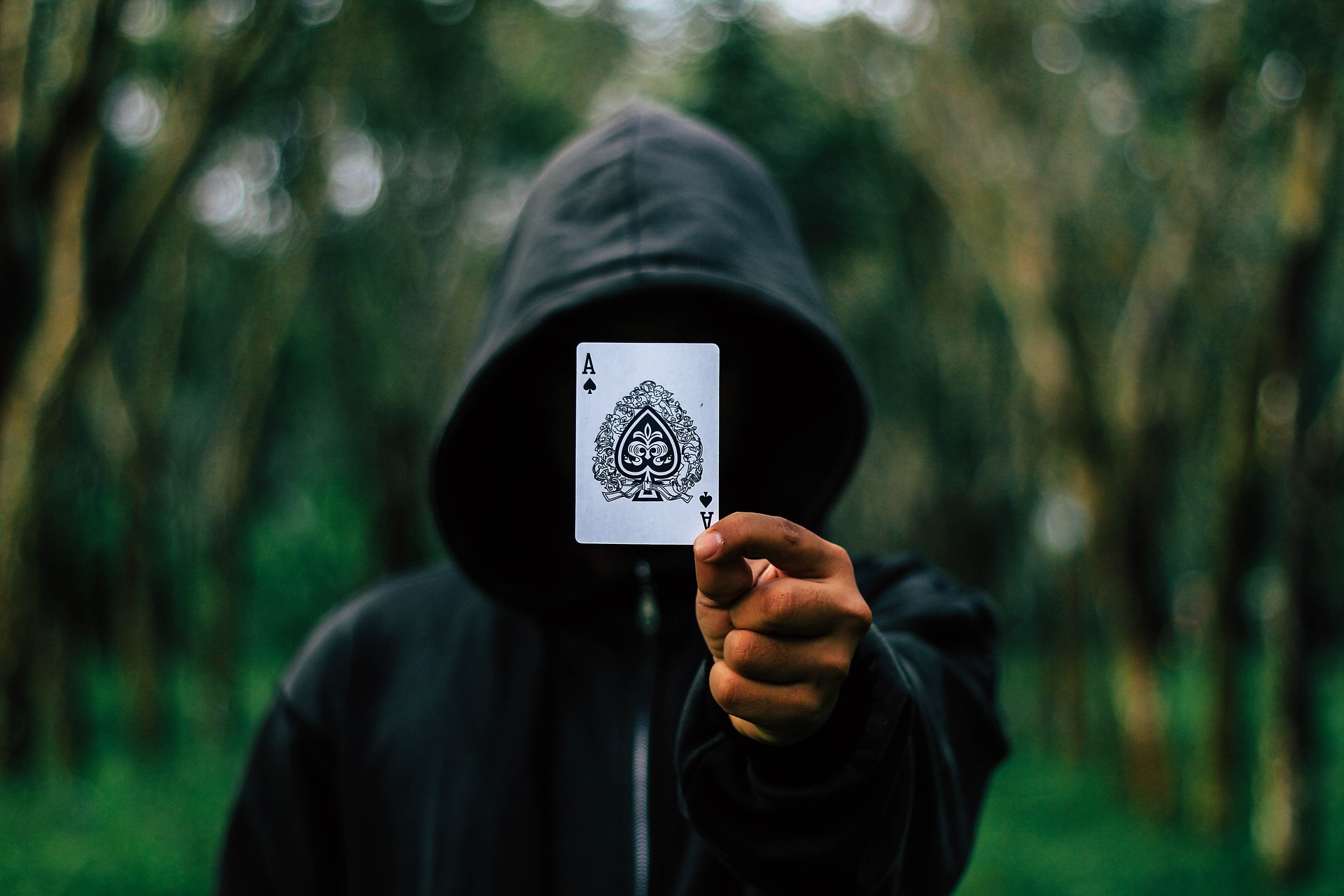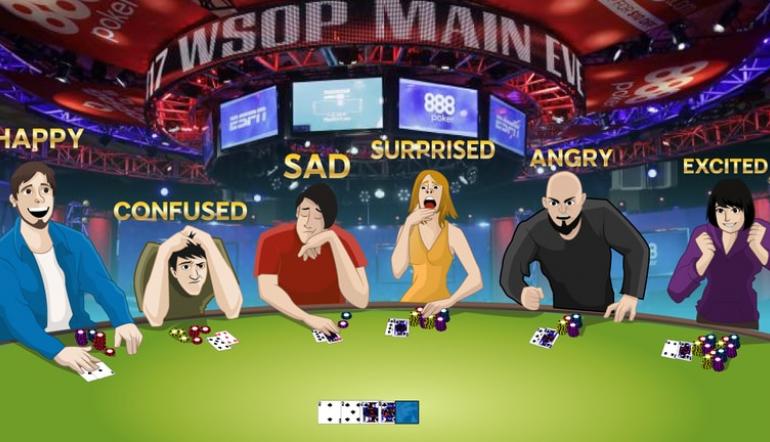#1528 - poker face: mastering body language to bluff & read tells. Men will also use their hair when they are speaking through body language. They will tousle their hair and run their hair through their fingers. You may also see a man with interest in a woman brush her hair out of her face or tuck a strand behind her ear. These are not things that people do when they are just friends with someone. Re: Poker & Body language in poker Ussualy if you cant see nothing from their face and if you are next to them, you can see they are bouncing their legs and looking for you to call, then they.
Which Faces Bluff Best In Poker?
Christopher Philip
The Current Study
Zero-sum games are games where on persons’ gains are another’s loss. These set of circumstances make them highly interesting to study.

In the current study, researchers led by Erik J. Schlicht Department of Psychology, Harvard University, Cambridge, Massachusetts, examined the effects of trustworthy, untrustworthy and neutral faces in a simplified version of the Texas Hold’em.
Unlike real poker, subjects were told they would not be able to bluff their way into winning a hand. Rather, they would make their decision to fold or call based on their start hand only, as well as the image of their opponent. They were not permitted to raise or bet. In fact, no other cards were to be dealt and no feedback provided along the way. In each case however, the opponent always bet randomly. The subjects were also always forced to be in the “big blind” which required them to put in an initial amount of chips.
The Results Of The Study
Body Language Poker Facebook
Results showed that threatening face information has little effect on wagering behaviour, but faces relaying positive emotional characteristics, that is, facial trustworthiness, made people take longer to make their decisions and they made more mistakes.
Differences in reaction times was more pronounced around the optimal decision boundary suggesting that faces mattered more during specific instances.
Overall, facial trustworthiness produced greater mistakes with respect to increased folding rates. This suggests that opponents, when nothing else was relevant, believed that the trustworthy faces were telling the truth about the strength of their hand.
Discussing The Findings
Untrustworthy
Neutral
The researchers say that “According to these results, the best “poker face” for bluffing may not be a neutral face, but rather a face that contains emotional correlates of trustworthiness — Moreover, it suggests that rapid impressions of an opponent play an important role in competitive games, especially when people have little or no experience with an opponent.”
The researchers suggest that common “avoidance cues” including dominant, angry and masculine led to more aggressive wagering decisions (increased calling), whereas “approach cues” such as happy, friendly, attractive and trustworthy led to conservative wagering (increased folding).
This is a rational approach, say the researchers, as approach cues signal to others honesty and suggests that the opponent really dose have a strong hand and is unlikely to be bluffing.
Drawing Conclusions

“Contrary to the popular belief that the optimal poker face is neutral in appearance,” say the researchers “the face that invokes the most betting mistakes by our subjects has
attributes that are correlated with trustworthiness. This suggests that poker players who bluff frequently may actually benefit from appearing trustworthy, since the natural tendency seems to be inferring that a trustworthy-looking player bluffs less.”
This is especially the case when opponents have little or no experience with one another which is the case early in the game or in one-shot negotiations. Likewise, facial morphology will predict how we make and ascribe trustworthiness during first impressions.
Poker Face Body Language
To learn more about decoding lying in people sign up for “How to be a Human Lie Detector.” The course is hosted by Vanessa Van Edwards but fully sponsored by Body Language Project.
Resources
Schlicht, Erik J.; Shinsuke Shimojo; Colin F. Camerer; Peter Battaglia and Ken Nakayama. Human Wagering Behavior Depends on Opponents’ Faces. PLOS one. July 2019. 5(7): e11663. doi:10.1371/journal.pone.0011663.g001
Want to learn more about body language quickly? Take a Video Course!
Tonya ReimanBODY LANGUAGE FOR POKER PLAYERS: SPOTTING TELLS It's one of the most talked about parts of poker: the tells. Whether or not you are at a multi-table tournament or a cash game, poker tells are always there. The pro's learn to hide them, the amateurs die by them. No matter your skill level, you too can learn to profit from spotting, and using, tells.
Spotting a tell is often difficult for new players or players who are not used to looking for them. Each player is different, and what may mean one thing for one player may mean something else for another. The easiest way to get into the habit of spotting tells is to start small: watch one person at a time. Watch how they act when they fold without betting, how they act when they have a good hand, how they act when they are bluffing, etc. Once you are confident in your ability to read one player, start studying others and see if the tells appear with them as well. More often then not, you will start learning what tells happen most often, and how to spot them.

Tells are often very subtle, but one you learn to spot them it will be much easier to pick up the clues. Remember the basic truism: in poker, showing strength means you are weak, while showing weakness means you are strong. It's a game of perception, and you need to be perceptive to spot the tells Here is a list of some of the most commonly encountered tells in poker:
? The Lean Back: A player is often conscious of the other people at the table, and if they know you are looking at them, they may sometimes do one of the classic tells: the lean-back. A player who has a strong hand will often lean back from the table, crossing their arms in front of them. This is an unconscious showing of their desire to seem nonthreatening. If you see this, the player is probably sitting on a good hand.
? The Easy Smile: The stare-down is a commonly used tactic at the poker table. If the hand is down to you and one other player, and you want to know what that player has, try staring them down. If they look back at you and they are sitting on a good hand, they will often offer a smile slightly after making eye-contact. But be careful. A true smile will bring the corners of the eyes back as well as the corners of the mouth. A fake smile where only the mouth smiles is usually an indicator of weakness. You'll need to be sure you are able to tell the difference between a genuine and fake smile.
? It's in the Eyes: When a player is dealt a great starting hand, such as a pair of kings in hold 'em or A-2-A-4 in Omaha, their eyes tend to get bigger. What you need to look for is someone who looks like they just saw something they like very much. The muscles around their eyes will unconsciously retract the eyelids and their pupils may even dilate. If you see this happen, you can be sure that players has a strong hand.
? The Repeat: There are verbal tells just that are just as valuable as physical tells. For instance, if you ask a player 'Did you hit your three of a kind?' and they repeat the question back to you, as in 'You think I hit three of a kind?' the answer is almost always yes. This fishing for information can be very useful if you do it correctly and know what to look for. If someone repeats your question back to you, this is usually a sign they are trying to avoid lying, and thus have a good hand.
? The Dejected Sigh: You've probably seen this a hundred times, and may have even done it yourself. As soon as a player looks at their cards or sees the flop, they almost immediately say something like 'Dammit,' or sigh in frustration. This is their attempt to try to convince you they are weak. But remember what we said earlier? Someone who is projecting weakness is usually strong, and when you see someone try so blatantly to project weakness, they are strong.
? The Look Away: When the flop comes and a player quickly looks away, this is a clear sign the cards have hit them with something good. For example, if a pair of 7's comes off on the flop and you see a player look down at their chips or quickly turn their attention to another player, that person probably has hit their set of 7's. In this situation, you'll often see these players check the bet and wait for someone else to put some money in the pot. At that time, don't be surprised if you see a big check-raise from the person who was so quick to look away from the flop.
